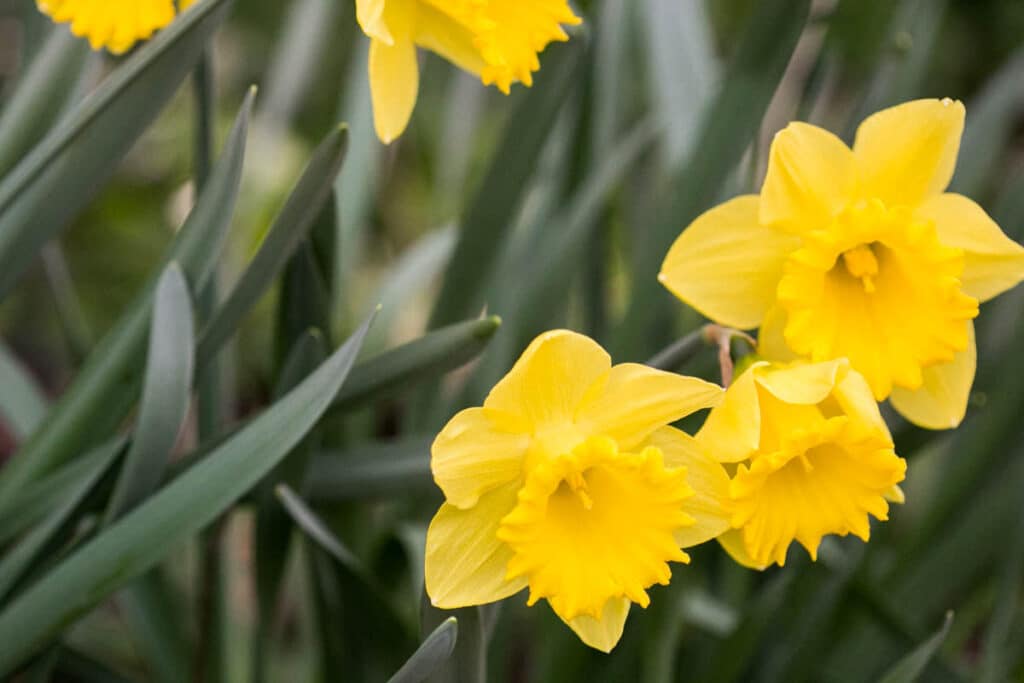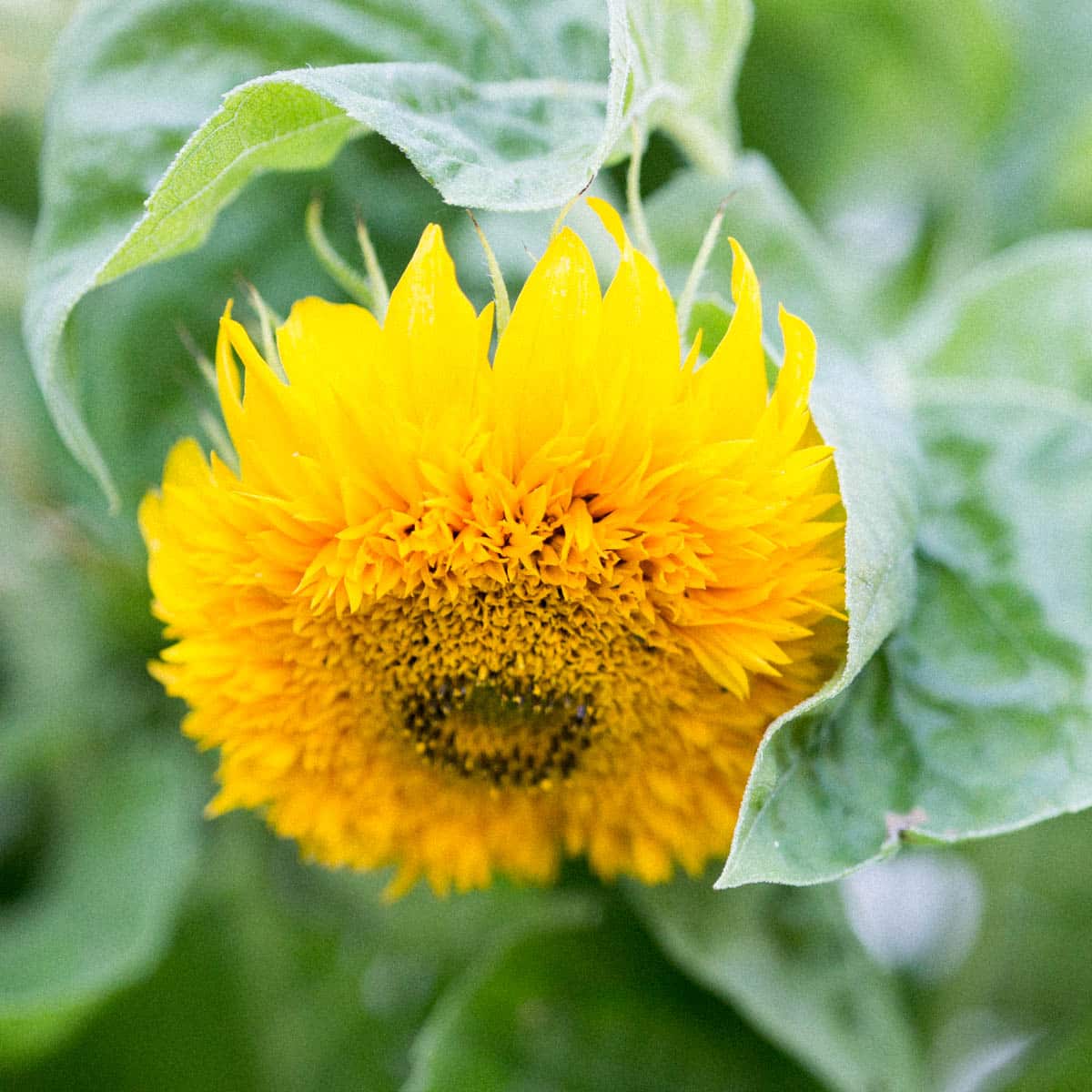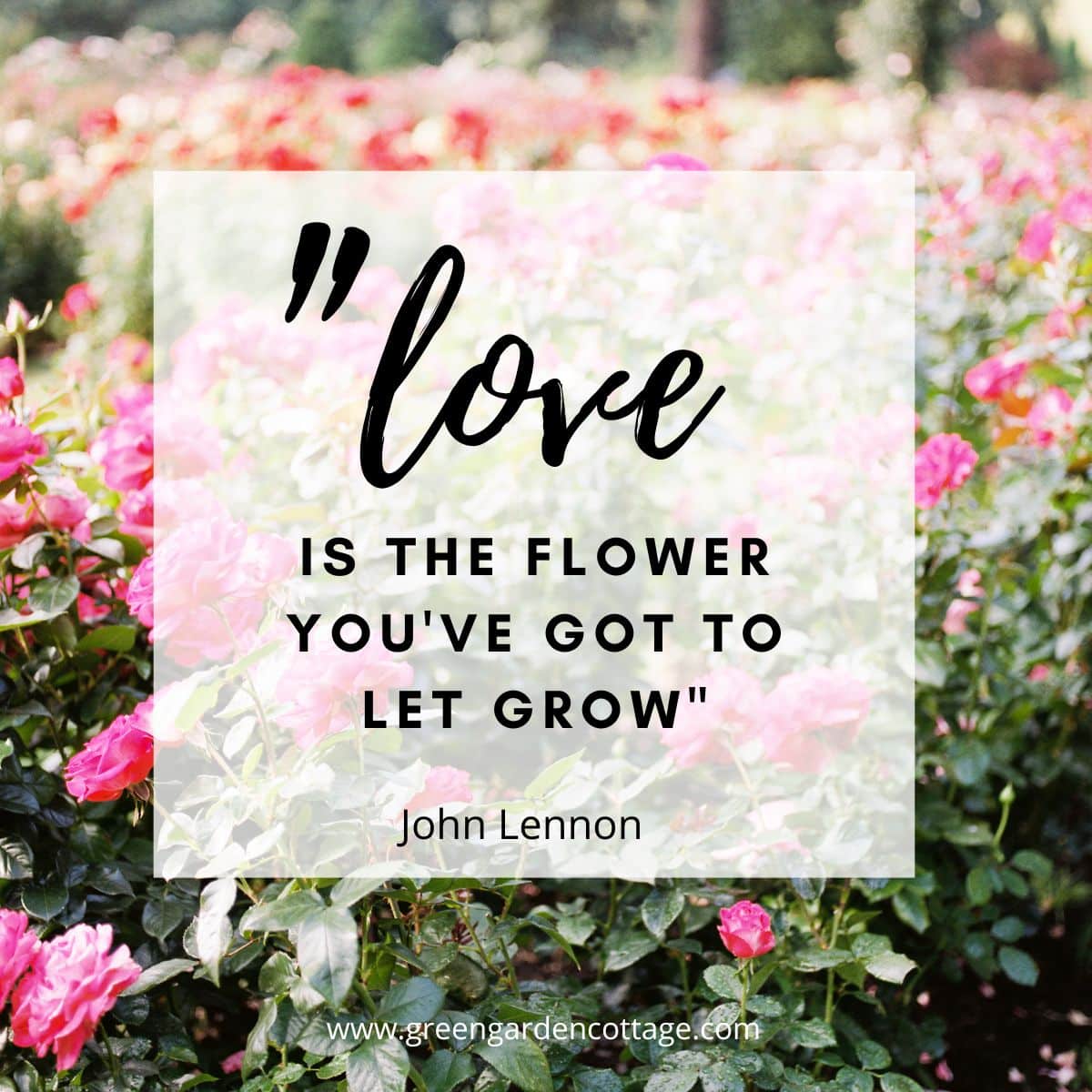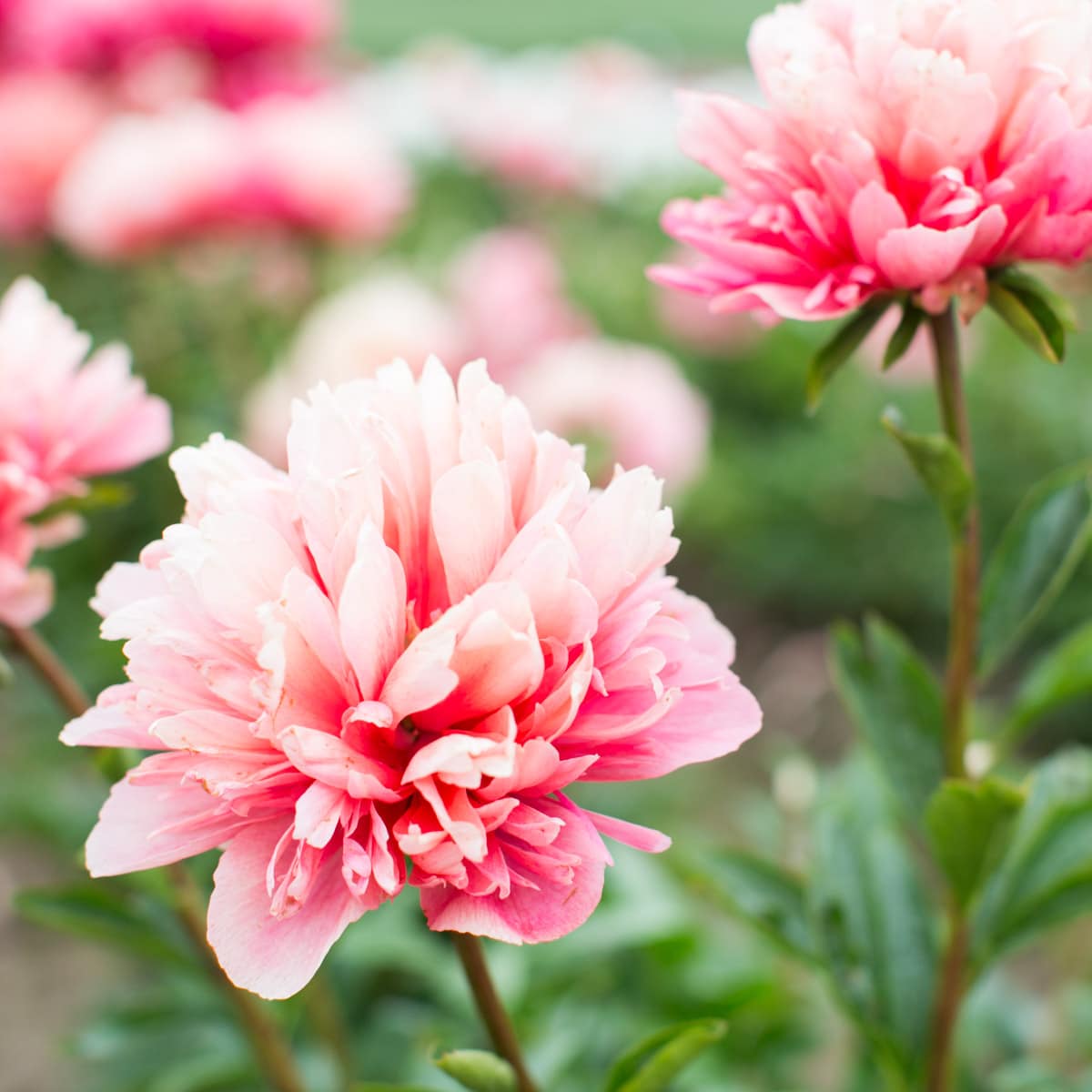How To Plant Daffodil Bulbs (And When)
Learn how to plant daffodil bulbs for gorgeous yellow flowers in spring!
Daffodil flowers are easy to plant, winter hardy and bloom each spring for decades to come. The best time to plant these long lived perennials is in the fall when soil temperatures drop but are not yet frozen.

These vibrant perennial flowers bring beautiful color in late winter through spring, just when the dreary gray of winter seems unbearable. When planting, daffodils need lots of sunlight and soil with great drainage. The bulbs should be planted at a depth of about 2-3 times their height.
It may be a tad intimidating… but planting these spring bulbs is incredibly easy. We’ve planted tulip bulbs for over a decade and we’re here to show you step by step how to do it.
Daffodil Varieties + Bloom Time
Daffodils are famous for being one of the first flowers to bloom in late winter.
But you can get a longer flowering season by planting a variety of different daffodils that bloom at different times throughout the season. Different bulb varieties can flower from late January up until April!

There are over 26,000 varieties of daffodils and they can be classified as early, mid or late bloomers.
This means that you can can plant several varieties in order to get a longer bloom period in your flower beds. Planting daffodil bulbs is easy and fun, and luckily these hearty bulbs will come back year after year.
Experiment by planting different types of daffodils in each bloom time:
Early blooming: Early blooming daffodils can flower as early as January, then through March (zone dependent). Try February Gold, Little Gem (miniature daffodils), or Topolino.
Mid blooming: Mid blooming daffodils like Ice Follies, Tahiti, and Sunny Girlfriend will brighten up your flower beds in March.
Late blooming: Late blooming daffodils burst on the scene in mid spring. Lollypop, Black Hero, Spring Green and Angel’s Wish are popular options.

Make sure to store bulbs in a cool, dry place prior to planting them in the ground. This will prevent mold and rot from forming, and keep them free from pests and disease.
You can also buy a bulb kit containing a mix of early, mid and late blooming flower bulbs, though this gives you less control over where each type is planted.
Learn what to do with daffodil foliage post bloom right here.
Why You’ll Love Growing Daffodils
Daffodils light up the spring garden with their vibrant yellow, white and gold flowers. Here’s a few reasons why you’ll love growing them:
- Daffodils make excellent cut flowers
- They are one of the first flower buds to bloom, often in late winter or early spring
- Daffodil are easy to grow and can be used in both formal gardens and wild areas for a natural look
- If you plant a variety of bulbs you can stretch out the growing season to last for months
- Unlike other bulbs like tulips, daffodils will bloom year after year

Tulips, grape hyacinths, hellebore and crocus are other spring blooming flowers that grow well with daffodils.
When To Plant
These spring-flowering bulbs need to be planted in the fall months of September through November. Soil temperature is the most important factor when planting.
Make sure to research your hardiness zone and soil temperature when planting.

Different planting times are based on location: warmer zones will plant later and in cooler zones bulbs need to be planted earlier.
For best results, the soil needs to be cool yet workable, with no frozen ground. Soil temperatures should be around 55-60 degrees so that the daffodil bulbs have a chance to grow their roots before the ground freezes.
Planting daffodils at the right time is crucial to their success as they need cold ground temperatures in order to produce flowers the following spring.
While daffodils are typically grown in zones 3-8, those who live in warmer climates can order pre-chilled bulbs to plant later in the season.
Where To Plant Daffodil Bulbs
Daffodils have two primary needs in order to thrive: lots of light and good soil drainage.
During the winter and early spring many trees will lose their leaves, allowing you more sun exposure for next year’s flowers. These open areas work well because they have lots of light.

Make sure the soil is loose and well draining. If you have clay soil, use your shovel and break up an area, remove some of the soil and add in organic matter and quality soil to improve drainage.
Sloped areas will encourage draining and are the perfect spot for daffodil bulbs.
How To Plant
To plant daffodils, you’ll need to place them in the ground with the pointed side up at a depth of 2-3 times the height of the bulb.

Daffodil bulbs have two ends, and you want to make sure you plant bulbs with the pointy end up.
Depth Of The Bulb
Generally speaking, bulbs need to be planted at a depth that is three times as deep as the height of the bulb. For example, if you have a bulb that is 2 inches tall, you would plant the bulb so that the bottom at 6 inches deep.
This is not an exact science, and you don’t have to use a ruler, but my kids and I usually do for accuracy and to add in some math:

Most of our bulbs were 2 inches high. So we dug a trench that was 6 inches deep. We had a few larger bulbs and those bulbs got planted slightly deeper.
Bulbs will come in different sizes, so it’s a good idea to measure before planting. When planting in a trench, take an average of your bulbs heights and use that to determine your depth.
Spacing
Plant bulbs about 4-6 inches apart. Well spaced daffodils will be able to pull lots of nutrients and water from the soil. Crowding bulbs close together can deplete the soil of the nutrients and water the plants need.
You can plant daffodils closely together for a bold spring display, however. You will just need to dig them up and divide them more frequently in order to make sure the bulbs have enough room and enough soil nutrients.

Plant in groups of 5-6, spaced accordingly, for a dramatic display of color. Or plant them in a row as we did here for a vibrant border effect.
For a natural look, dig a large trench and scatter the bulbs throughout.
When covering daffodils, add compost to the soil you pulled from the ground, blend in and cover the bulbs. This compost-soil mix will improve soil surface drainage and add nutrients to the soil.
As a general rule, plant 5-6 bulbs per square foot of soil.
Using A Bulb Planter
A bulb planter can also be used for planting daffodils. The soil must be workable and not hard if you’d like to use this tool (if you have very hard soil you need to amend it, anyway!).
A bulb planter has a built in measurement and quickly removes the soil. Place your bulb into the hole and cover it with the soil that you just removed. This method can make planting lots of bulbs faster and easier, but for larger bulb plantings a large trench is faster.
Growing Conditions
Don’t forget to take growing conditions into account when planting narcissus bulbs. They crave a full sun location with good soil drainage:
Light
Daffodils need a sunny spot with good drainage in order to thrive. Make sure the bulbs are planted in an area that has at least 6 hours of daylight. Daffodils bloom in spring and winter months when deciduous trees have lost their leaves, giving more location options.
Areas with lots of morning sun and afternoon shade can also work.

Soil
Tulips need fertile, well-draining soil rich in organic matter in order to thrive. Soil drainage is very important and it can be beneficial to plant the bulbs on a slope. A slightly sandy soil rich in organic matter would be ideal!
Avoid planting daffodil bulbs in soggy soil or clay soil. A good way to check for areas that collect water is to wait until after a rainstorm. Some areas will be full of water and slower to drain after a heavy rainfall. Avoid planting daffodils in this area, or amend the soil heavily with additional soil and drainage before planting bulbs.
Poor soil can cause the tulip bulbs to rot and decay, so choose your soil wisely!
Water
The American Daffodil Society recommends watering bulbs immediately after they are planted. The soil should then be kept consistently moist, but not soggy. Do not flood your daffodil bulbs, consistently moist soil is adequate.
Fertilizer
Daffodil bulbs contain all the nutrients they need in order to thrive and bloom the first year. When planted in good soil do not need fertilizer.
Naturalizing Daffodils
Daffodils can be planted in large drifts for a beautiful spring wildflower display. The bulbs will spread naturally over time, naturalizing the area and creating a beautiful sea of flowers.
When planted correctly, bulbs planted in these areas will thrive with little to no care and will produce spring blooms for decades to come.
To naturalize daffodils, first choose a variety suited for growing in more wild areas. Some varieties that work well are the popular Tete-a-Tete, Mount Hood, or Peeping Tom.

FAQ’s
Daffodils are prone to rotting and therefore should not be soaked prior to planting. You do want to water them in after planting, however.
As a general rule, daffodil bulbs should be planted at a depth that is 2-3 times the height of the bulb. If you have a 2 inch bulb, you would plant it with the bottom of the bulb touching the soil at a depth of 6 inches.
Daffodil bulbs can last for a good 9-12 months when stored correctly in a cool, dry location.






